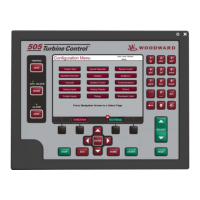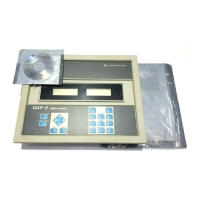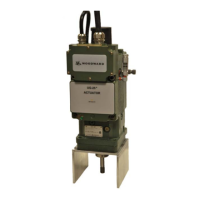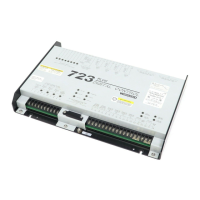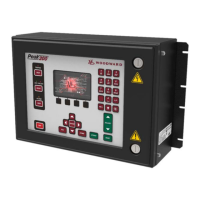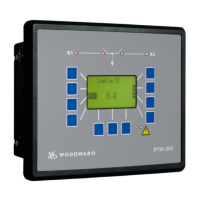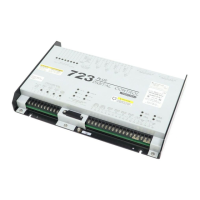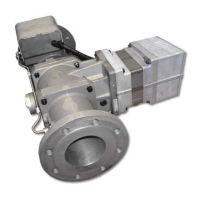Manual 37365A GCP-30 Series Packages - Genset Control
Page 48/179 © Woodward
Analog Controller (BPQ, XPQ: Setting 'ANALOG')
Parameter 71
Pow.fact.contr.
gain Kpr 000
BPQ, XPQ
Power factor controller: P-gain 1 to 240
The gain coefficient K
pr
specifies the Proportional portion of the PID control loop.
By increasing the gain, the response is increased to permit larger corrections to the
v
ariable to be controlled. The farther out of tolerance the process is the larger the
response action is to return the process to the tolerance band. If the gain is confi-
gured too high, the result is excessive overshoot/undershoot of the desired value.
Parameter 72
Pow.fact.contr.
reset Tn 00.0s
BPQ, XPQ
Power factor controller: reset time (integration) 0.0 to 60.0 s
The reset time T
n
identifies the Integral portion of the PID control loop. The reset
time corrects for any offset (between set point and process variable) automatically
over time by shifting the proportioning band. Reset automatically changes the out-
put requirements until the process variable and the set point are the same. This pa-
rameter permits the user to adjust how quickly the reset attempts to correct for any
offset. The reset time constant must be greater than the derivative time constant. If
the reset time constant is too small, the engine will continually oscillate. If the reset
time constant is too large, the engine will take an excessive amount of time to settle
at a steady state.
Parameter 73
Pow.fact.contr.
derivat.Tv 0.00s
BPQ, XPQ
Power factor controller: derivative-action time 0.00 to 6.00 s
The derivative-action time T
V
identifies the Derivative portion of the PID control
loop. By increasing this parameter, the stability of the system is increased. The con-
tro
ller will attempt to slow down the action of the actuator in an attempt to prevent
excessive overshoot or undershoot. Essentially this is the brake for the process.
This portion of the PID loop operates anywhere within the range of the process un-
like reset.
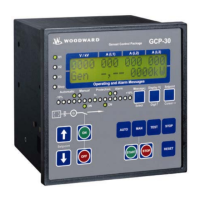
